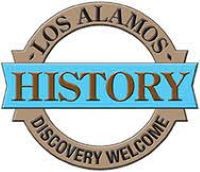 LAHS News:
LAHS News:
John Earl Haynes and Harvey Klehr will present Los Alamos Historical Society’s (LAHS) October Lecture Series talk, “Codebreaking, Venona, and Identifying Soviet Spies in the Manhattan Project,” 7 p.m., MDT, Oct. 3 via Zoom.
The authors provided this introduction to their topic:
“During World War II neither U.S. Army counterintelligence nor the FBI identified an espionage leak from the Manhattan Project’s highly secret atomic bomb laboratory at Los Alamos, NM. However, in 1946 a Signal Intelligence Service project, later named “Venona,” decoded a 1944 cable from the Soviet KGB station in New York to its Moscow headquarters identifying leading American scientists working at the Los Alamos facility.
“Over the next six years, the Venona project broke additional KGB cables identifying three Soviet spies working at the wartime Los Alamos facility: Klaus Fuchs, a senior physicist working on the plutonium bomb; Theodore Hall, a junior physicist also working on the plutonium bomb team; and David Greenglass, an army machinist who prepared models for the plutonium bomb detonator.”
Haynes and Klehr, who wrote the first history of the Venona project (Venona: Decoding Soviet Espionage in America, Yale University Press, 1999) will discuss the origins of the Venona project as a diplomatic intelligence effort to get forewarning of any second Nazi-Soviet Pact, as well as the formidable cryptographic task the U.S. Army code breakers faced because the Soviets used a ‘one-time pad’ coding system, at that time regarded as unbreakable.
Klehr and Haynes will talk about the fates of the three spies identified by Venona, also noting that the Venona breakthrough was partial. Only a portion of Soviet cable traffic was decoded, and those cables that were decoded failed to include a fourth Soviet spy at the Los Alamos facility: Oscar Seborer, an army technician who worked on the wiring of the plutonium bomb’s detonator. Seborer was not publicly identified until 2019 when Klehr and Haynes published an article in the CIA journal, Studies in Intelligence, that identified Seborer from a combination of FBI investigative files from the 1950s, made public in the early 2000s, and KGB archival records made public in 2009.
Those wishing to attend the Zoom presentation click here.
Meeting ID: 848 0256 3001
Passcode: 780518
Questions may be directed to LAHS at 505.662.6272.

